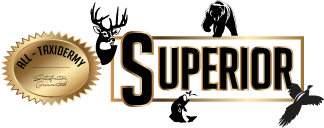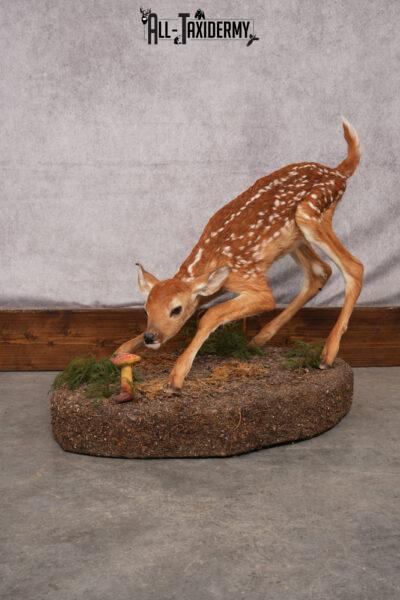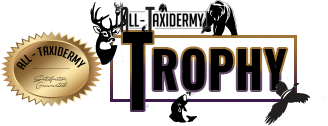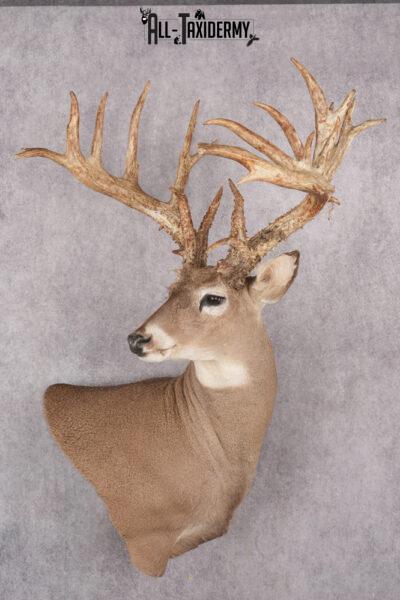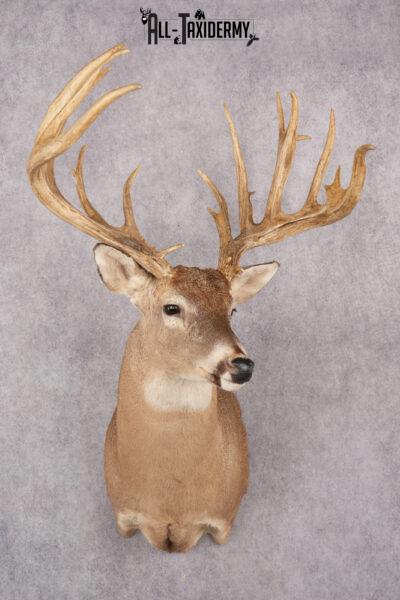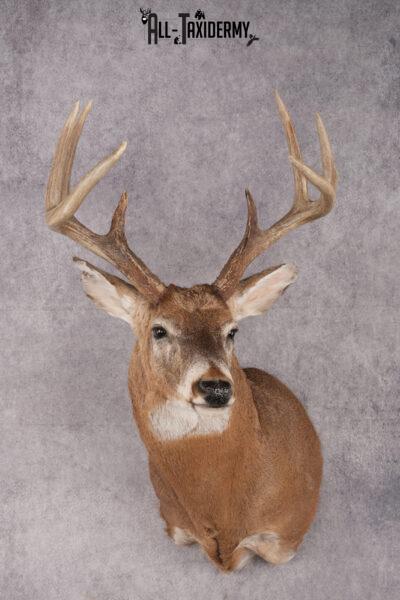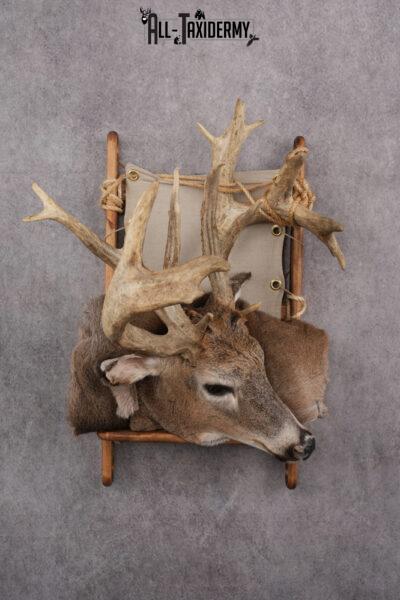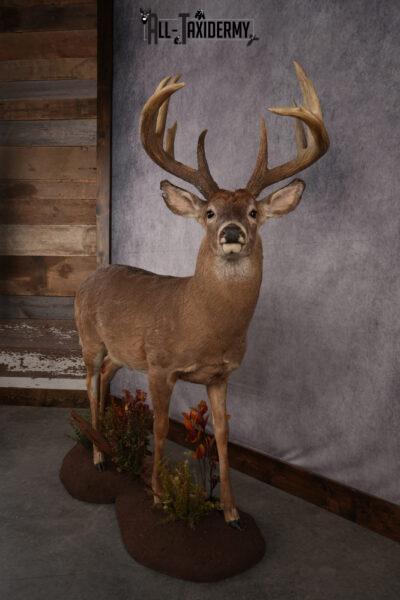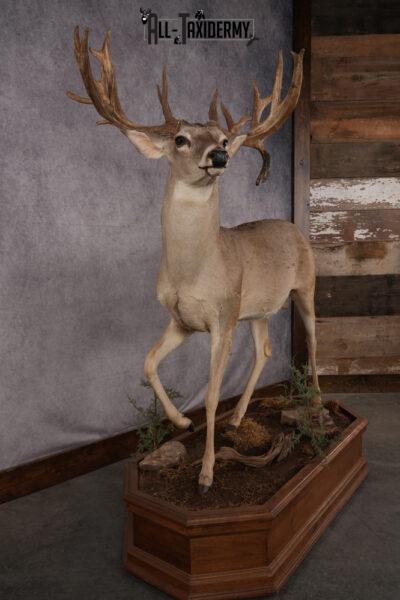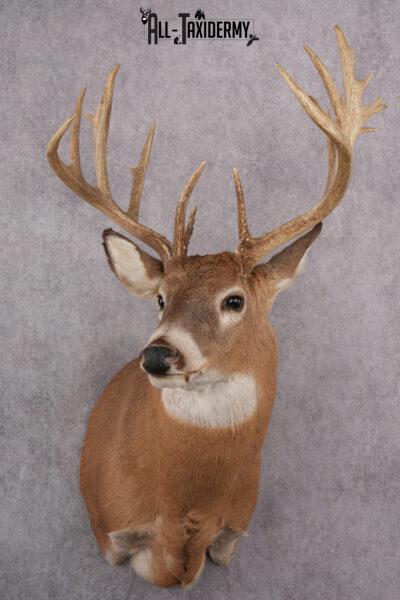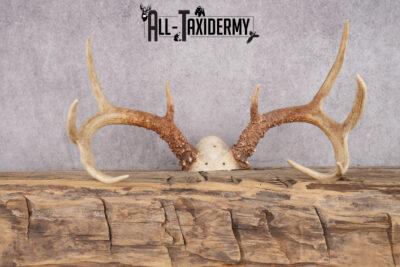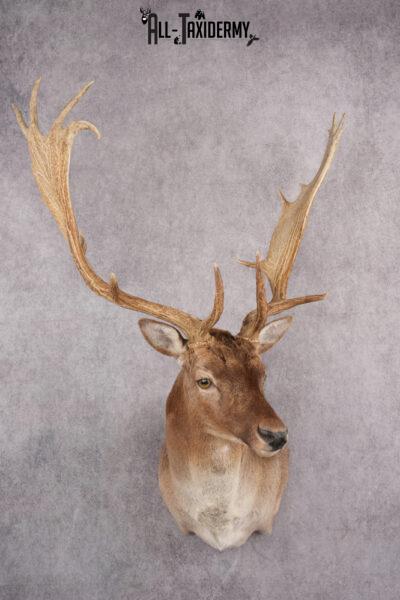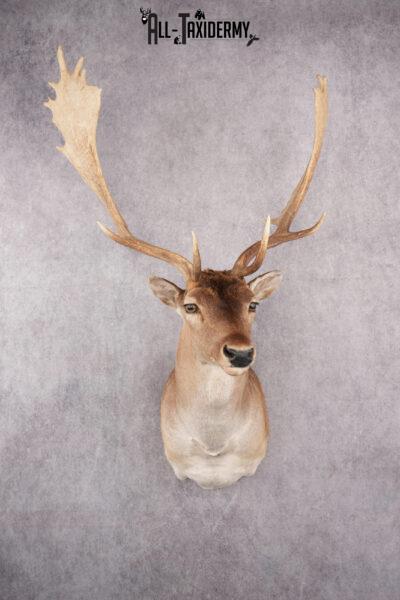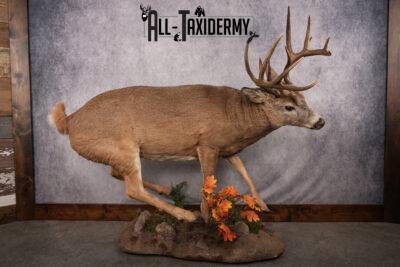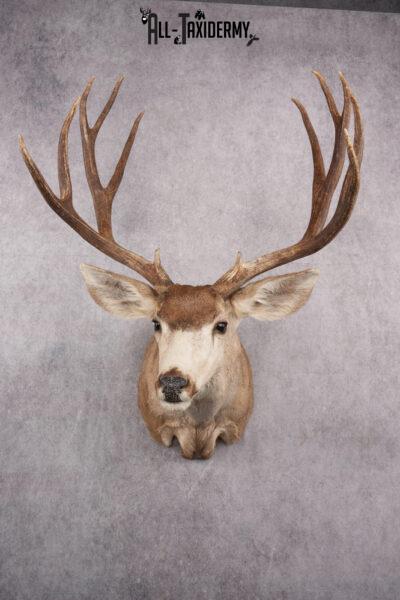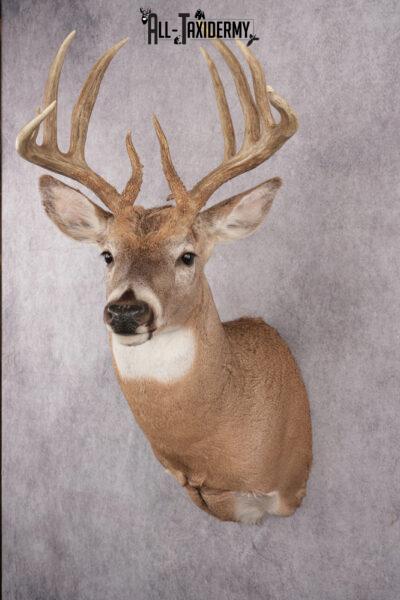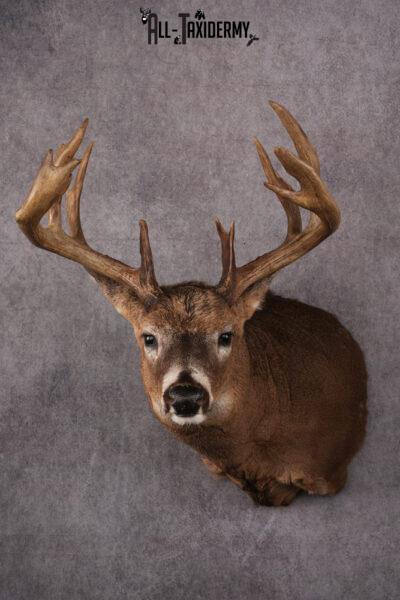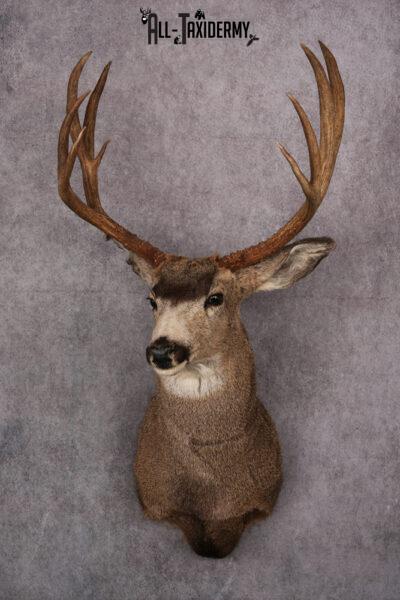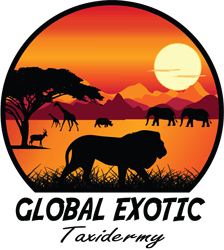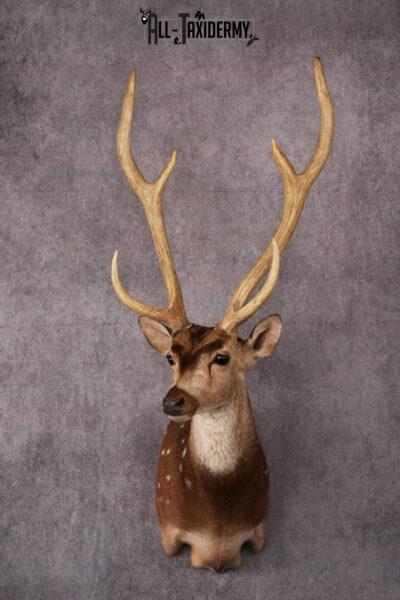

 SOLD
SOLDWonderful display ... Read More
Whitetail deer fawn taxidermy mount for sale SKU 2714
-
View Details

 SOLD
SOLDBoone & Crockett 237 5/8" ... Read More
Whitetail deer taxidermy mount SKU 2720
-
View Details

 SOLD
SOLDBoone & Crockett Score 217 4/8" ... Read More
Whitetail deer shoulder taxidermy mount for sale SKU 2719
-
View Details- Sale!


 SOLD
SOLDBig Body Deer, Thick Beams ... Read More
Whitetail deer taxidermy shoulder mount for sale SKU 2727
-
View Details 

 SOLD
SOLDBoone & Crockett 186 2/8" Double Beam ... Read More
Whitetail deer back pack taxidermy mount for sale SKU 2731
-
View Details

 SOLD
SOLD189 3/8" Gross ... Read More
Full Body Whitetail Deer Taxidermy Mount SKU 2680
-
View Details

 SOLD
SOLD227 5/8" Boone & Crockett AWARD ... Read More
Texas Full Body Whitetail Deer Taxidermy Mount SKU 2679
-
View Details

 SOLD
SOLDBoone & Crockett 183 5/8" ... Read More
Whitetail Taxidermy Shoulder Mount SKU 2640
-
View Details
 SOLD
SOLD17 1/8" Inside Spread ... Read More
9 Point Whitetail Deer Skull Cap SKU 2680.1
-
View Details

 SOLD
SOLDSCI GOLD 247 2/8" ... Read More
Fallow Deer Taxidermy Shoulder Mount SKU 2681
-
View Details

 SOLD
SOLDSCI SILVER 209 5/8" ... Read More
Fallow Deer Taxidermy Shoulder Mount SKU 2683
-
View Details

 SOLD
SOLD153 2/8" Boone & Crockett ... Read More
Full Body Whitetail Deer Taxidermy Mount SKU 2654
-
View Details

 SOLD
SOLDBoone & Crockett 202 4/8" ... Read More
6×6 Mule Deer Taxidermy Shoulder Mount SKU 2637
-
View Details

 SOLD
SOLD142 0/8" Boone & Crockett ... Read More
Whitetail Deer Taxidermy Mount SKU 2648
-
View Details
 SOLD
SOLD17 Shed Chandelier ... Read More
Whitetail Deer Antler Chandlier SKU 2492
-
View Details

 SOLD
SOLDBoone and Crockett gross 168 2/8" ... Read More
Whitetail Taxidermy Shoulder Mount SKU 2478
-
View Details
 SOLD
SOLDBoone and Crockett 153 0/8" ... Read More
Mule Deer Taxidermy Shoulder Mount SKU 2412
-
View Details

 SOLD
SOLDSCI GOLD 125 2/8 ... Read More
Axis Deer taxidermy mount SKU 2584
-
View Details
Deer Taxidermy Mounts
Shop Deer Taxidermy Online
No matter if you are a deer hunting enthusiast with a recent successful hunt or you own a store or museum and are looking for ready taxidermy pieces – All-Taxidermy can assist you! Our deer shoulder, life-size, and other mount types all demonstrate Great to Trophy quality. Please shop deer taxidermy online, or read more for more details on each species and the type of work we do.
Shoulder Deer Mounts
Every hunter should have a deer shoulder mount in their taxidermy collection. This type of taxidermy shows off the animals impressive antlers, beautiful hide, and facial features. In addition, deer shoulder mounts help to reduce space, which is especially helpful if you have other taxidermy pieces that you plan to add to your collection.
We have Whitetail, Mule, Fallow, Roe, Sika, and other species of deer available in our collection of shoulder mounts. Your shoulder mount can be crafted in the following action stances: upright, semi-upright, semi-sneak, and full sneak. No matter what style you’re going for, All-Taxidermy proudly works to create a lifelike stance that’s true to the animal.
There are several options to choose when it comes to deer mount ideas. Let’s take a look at the different options for custom deer mounts below:
Life-Size Deer Mounts
Have you always dreamed of adding a life-size deer mount to your collection? With All-Taxidermy, our website makes it easy to filter by mount type, quality grade, and species. Our taxidermists can also make your dream Mule deer stand among brush, craft your Whitetail deer in a running stance, or even add two or more deer to a custom habitat. There are countless options for your full size deer mounts!
Interested in our life-size deer mounts? Contact All-Taxidermy today for more information about the taxidermy process, timeframe of the project, shipping, and more. For details about cost, please refer to our price list here.
Deer European Mounts
One of the most popular ways to style your deer mount is to opt for the European mount. Whether you’re looking for simplicity or would like to leave more room for other taxidermy pieces, any hunter or taxidermy enthusiast will appreciate a European mount. Check out our guide to European mounts for more information on this type of taxidermy.
Deer Skulls & Antlers
Another popular option is to make your deer into a skull. At All-Taxidermy we provide Deluxe Beetle Cleaned services to ensure you get a professional, properly-cleaned work of art to display on your office desk or among your other skull pieces. In addition to deer skulls, you can also opt for a simple deer antler display.
Deer Legs/Feet
A unique alternative to the standard deer taxidermy display is to opt for a deer leg. For example your deer leg design can be made into a cane. Our deer leg taxidermy can be found in our Novelty & Oddity collection. Other unique options for adding a deer leg or foot to your collection include lamps, thermometers, and other unusual conversation starters!
Deer Taxidermy Species
Are you a taxidermy enthusiast interested in being able to recognize the different species of deer? Take a look at our info below, or refer to this helpful list of deer.
North American Deer
The Whitetail deer is native to the Americas and is found extensively from southern Canada to Central America. Recognized by its white tail, which it raises when alarmed, this deer is easily one of the most recognized and desired game animals in North America. Due to its popularity among hunters, Whitetail deer are commonly taxidermied, especially as shoulder mounts or European skull mounts. The Coues deer, which you’ll also find on our website, is a subspecies of the Whitetail deer. It’s native to the southwestern United States and Mexico. Coues deer are smaller and have a more greyish coat compared to their eastern relatives.
Another popular species of deer commonly taxidermied is the Mule deer. These beautiful deer are native to western North America and are easily distinguishable by their large, mule-like ears. Their antlers fork as they grow, unlike the Whitetails. They primarily inhabit open areas and rocky hillsides. Mule deer taxidermy is admired for its grand antlers and the characteristic large ears, adding a distinct touch to any taxidermy collection.
European, Asian, & North African Deer
Native to Europe, the Fallow deer has been introduced to various parts of the world. Recognizable by their broad, palmate antlers and a coat that can vary from brown to almost white, these deer are also known for the white spots on their backs.
Also known as Chital or Spotted Deer, the Axis deer is native to the Indian subcontinent. They have a reddish-brown coat with white spots and long, three-pronged antlers. Another deer commonly taxidermied is the Sika deer. Originating from East Asia, this deer have a coat that varies from yellow-brown to dark grey, often with white spots. Their habitats range from grassy marshlands to dense forests.
The Red stag, also known as the red deer, dwells in Europe, parts of Asia, and North Africa. They are the fourth-largest deer species and have a reddish-brown coat. Males, known as stags, have large, branching antlers. Another deer native to Europe and Asia is the Roe deer, a small deer with a reddish and grey-brown fur coat. Unlike other deer, Roe deer antlers are short and have three prongs.
Lastly is the Père David’s deer. This unusual deer species, native to the river valleys of China, is characterized by a summer coat with a reddish-brown hue and a longer, shaggier grey winter coat. Their antlers are unique, with an elongated tine extending forward. Due to their rarity, taxidermy of Père David’s deer is less common but stands out due to its unique antler and coat characteristics.
Deer Taxidermy FAQs
How to taxidermy a deer?
New to the taxidermy process? Taxidermy is a skilled craft that involves several steps. To start, you should carefully skin the deer, ensuring not to damage the hide. Next, clean the hide and treat it with a preservative solution or a tanning process to prevent decomposition. Then, prepare a form that matches the deer’s size and posture. You will then stretch and sew the treated hide over the form. Next, add eyes, which are typically made from glass, and any additional detailing. Allow the specimen to dry in a controlled environment. Lastly, finish by adding details, such as coloring, to make the specimen look more lifelike.
How much does it cost to taxidermy a deer?
The cost to taxidermy a deer depends on the type of mount and the pose you’re planning on having us prepare for you. For example, a shoulder mount for either a whitetail or mule deer is estimated around $700 or more. Meanwhile, you can expect a much higher cost for a life size mount at around $3,000. For hide tanning, the cost for that is around $325, and for European mounts, you’re looking at around $125. *Please note: these prices are just estimates and are subject to change.
How long does it take to taxidermy a deer?
The time it takes to taxidermy a deer will depend on several factors. This includes the specific taxidermy method used, the desired pose, the deer’s size, and the type of mount you’re going for. On average, the process can take anywhere from several weeks to a few months for a shoulder mount. This timeframe includes curing, drying, and setting periods, which are crucial for the longevity of the mount. However, it’s also essential to consider the taxidermist’s workload. For example, during hunting season, there might be a backlog which can extend wait times.
How to clean taxidermy deer?
Keeping a taxidermy deer clean helps maintain its appearance and longevity for years to come. First, dust the mount regularly using a soft brush or cloth to prevent buildup. For a more thorough cleaning, lightly dampen a cloth with water and gently wipe the deer’s fur. Avoid soaking the fur. If the eyes or nose areas are smudged, they can be polished with a soft cloth or cotton swab dampened with a bit of window cleaner. Avoid placing the deer in direct sunlight or in areas of high humidity, as this can damage the taxidermy over time. More here about caring for your trophy mounts. If you have further questions about caring for your deer taxidermy mount, please talk with our team.
For custom deer mounts, learning how to properly field dress a deer is the first step in taking care of your mount. More information on proper field care in our Field Care 101 article.
Contact All-Taxidermy
Why choose our team for deer taxidermy services? As a family-owned company, we value your hunting story and craft deer taxidermy that bring out the full beauty of the animal – as if it were still alive! If you’re looking for other species besides deer, check out our taxidermy mounts collection.
Our team is known for our skilled craftsmanship and attention to detail. Ready to start your project? Give our team a call today, or browse our online taxidermy store!

